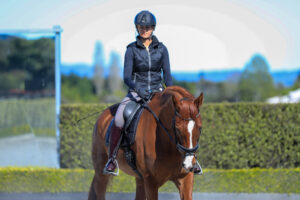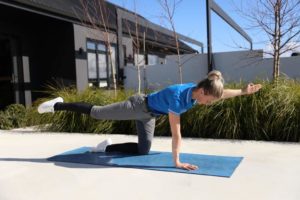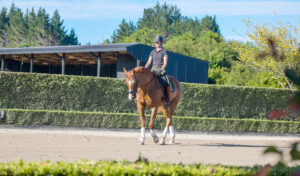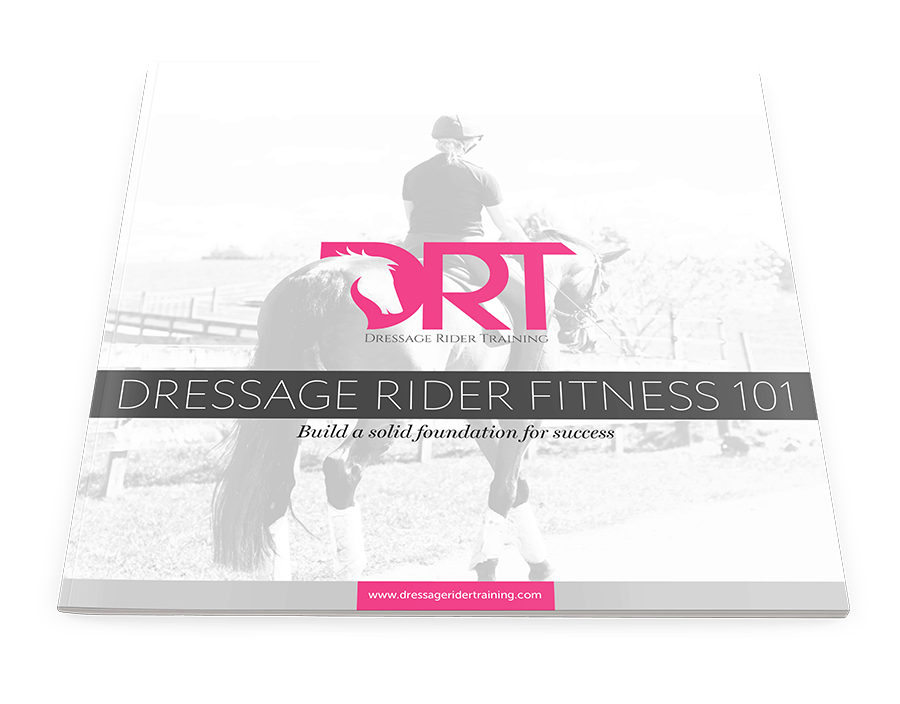The Corset Of Your Abdominals : Your TVA
Learn the role of the corset of your abdominals: your TVA and the role it plays in your dressage position and posture in the saddle. Discover exercises you can do today to start to strengthen it.
The corset of your abdominals: your TVA is an important muscle to understand for dressage riding.
You may not have heard of your TVA (transverse abdominis muscle), but it stabilises your entire lower back.
It’s one of the central core stabilising muscles of the lumbar spine.
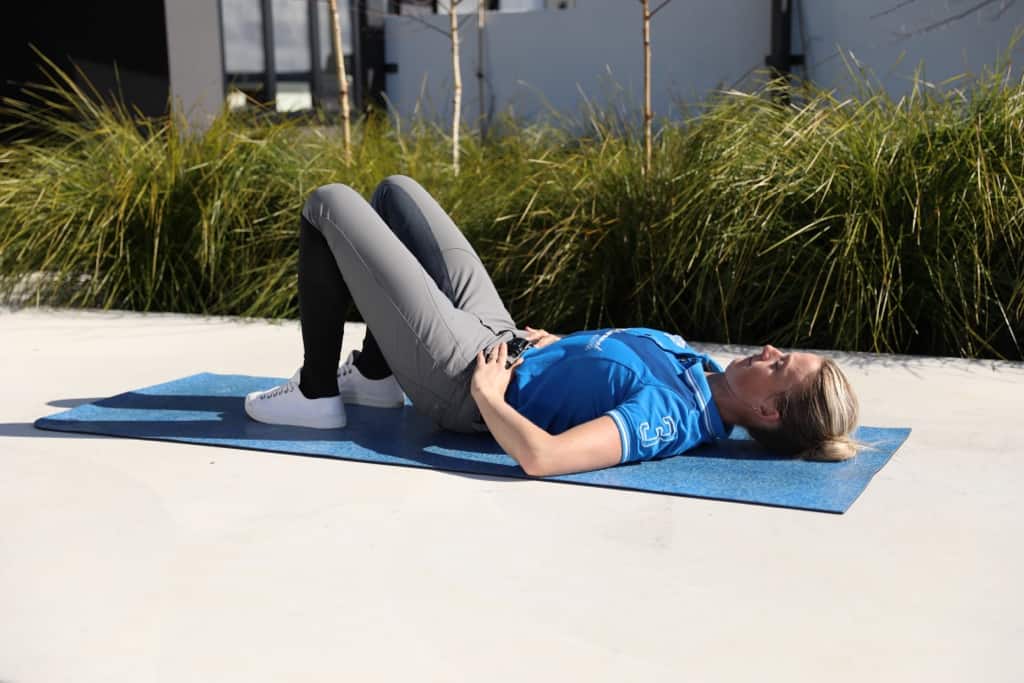
The TVA is the deepest of the abdominals and is often referred to as the “corset muscle” because it wraps around your sides and spine.
It acts like a muscular girdle of sorts and protects the lower back. Having a strong TVA when you are riding helps with core stability and that stability will allow you to remain stable and more balanced in the saddle.
If you have weak TVA muscles, the abdominal wall will often begin to bulge forward and the pelvis may rotate forward and increase the spine’s lordosis (inward curvature).
This can create some issue when you are in the saddle as proper alignment of your joints can be disrupted.
Not to mention the effect this has on your stability, then add the force of the horse’s movement to this and you can create all sorts of niggles and pain.
Here is a great video from Ken Hub, explaining more about the anatomy of the TVA.
How to Activate the Transverse Abdominis (TVA)
Bracing has been found to be the most effective way to create stability in the lumbar spine. Bracing results in the contraction of the entire core muscle group, and particularly the TVA.
The best way to use the bracing technique is to contract and hold the abdomen (don’t suck in the gut as in hollowing) and continue to breathe in and out.
The goal is to tighten the muscles without sucking in, or expanding your abdomen, hence the nickname corset.
Why care about the transverse abdominis?
Since the TVA acts as a muscular girdle, it stabilizes your pelvis and provides support against outside forces and movement.
Crucial when we are riding and have the unpredictability of a horse beneath us.
It defends against repetitive physical stresses from various motions your body makes while riding and doing chores around owning a horse.
A strong TVA will help you transfer force more efficiently through the muscles rather than through your back and joints, thus aiding in reducing aches and pains (and injuries) caused by related stresses and repetitive movements.
How do you get a stronger transverse abdominis?
To start building strength in your TVA muscle, you will need to know how to activate it through a series of “braced” abdominal maneuvers.
Then while maintaining that braced position, putting yourself in various other positions to challenge its strength and stamina.
The Corset Of Your Abdominals : Your TVA
Here are a selection of exercises to help you learn to activate and strengthen your TVA muscles.
Get a feeling as to why it is called the corset of your abdominals by learning how to activate it correctly and apply it to your everyday life.
1. To Activate Your TVA
Lay down on your back draw your knees in and place your hands on your belly. Allow your upper body to relax and then think of bracing your middle. I like to picture either someone about to punch me in the belly, or someone come and stand on my belly.
It’s that feeling of bracing that you are wanting to create and maintain and then introduce breathing while you maintain that braced belly. Hold for 10 seconds and repeat 8-10 times. Have as much rest in between as you need.

2. Hollow Holds
Hollow body holds are an awesome way to improve the strength of your TVA and your overall core strength. Activate your TVA as step 1 and then think of reaching towards your toes and holding that reach. Really think of narrowing that corset.
Don’t suck in; instead, think of bracing tighter and pulling that corset in. Hold for 10 secs, rest and repeat 8-10 times.

3. Hollow Hold Leg Extension
Similar to the hollow hold, this is the next step. Take your legs straight up so your toes are above your hips.
Then lower them down to the ground while maintaining your braced belly.
Only go as far as you can keep that brace and your back doesn’t lift. Hold this for 10 secs, rest and repeat 8-10 times
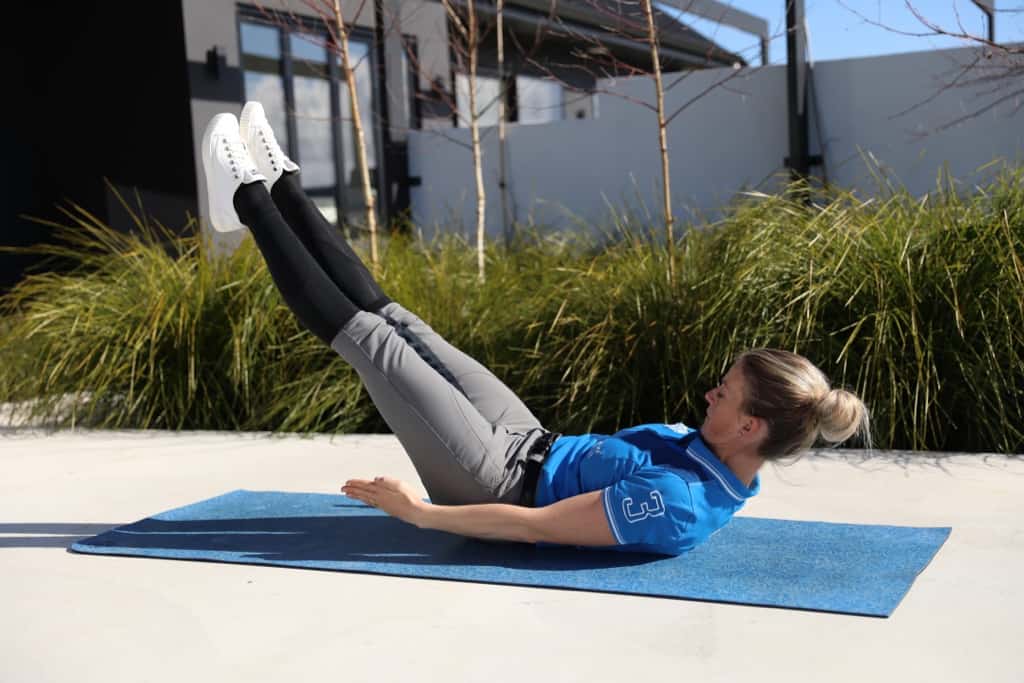
4. Dead Bug
This exercise is a great way to really focus on that braced hold while challenging it with forces in new directions.
Lie on your back with your feet in the air and knees bent 90 degrees. Raise your arms in the air so that your hands are directly above your shoulders.
Slowly extend your right leg in front of you and your left arm above your head, keeping your lower back pressed against the floor.
Return to the starting position. Repeat on the other side. Do 8-10 reps each side.

Bear Craw
With your braced centre, set yourself up on all fours. Hands under shoulders and knees under hips.
Then lift your knees off the floor. Feel how your corset needs to strengthen to maintain neutral spine.
Hold this for 10 secs and repeat 8-10 times. Rest as much as you need between.
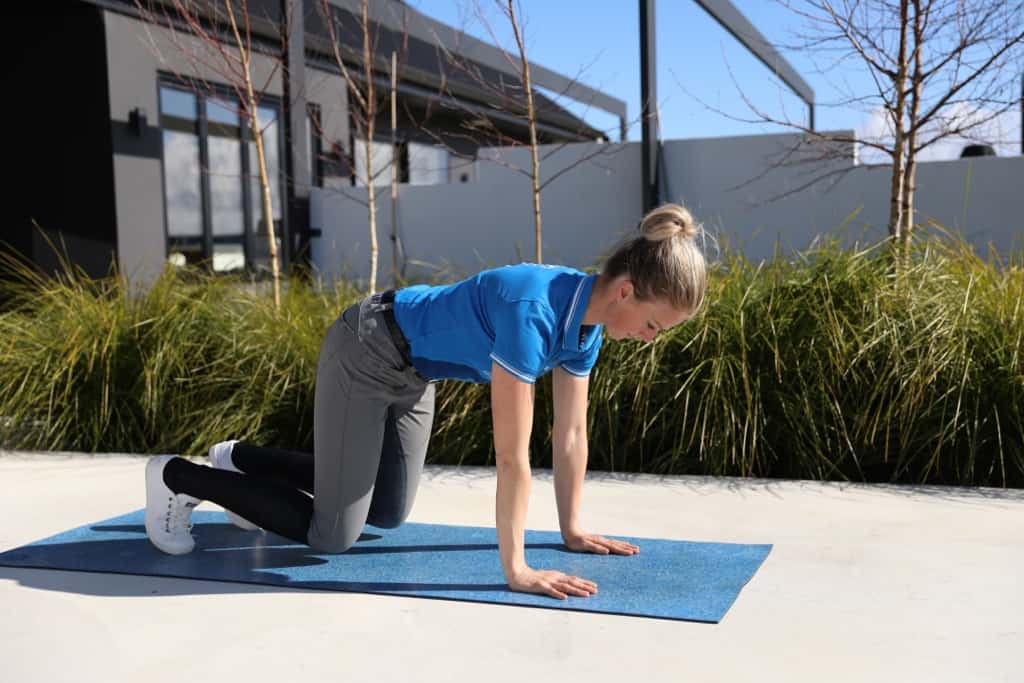
Bird Dog
These work on core stability, and they activate the glutes as you work your abs.
Start on your hands and knees in tabletop position with your wrists above your shoulders and your knees below your hips.
Inhale and extend your right arm forward and left leg back, maintaining a flat back and square hips.
Brace your middle and exhale as you draw your right elbow to your left knee.
Extend back out to start. Don’t forget to do both sides. Do 8-10 reps each side.
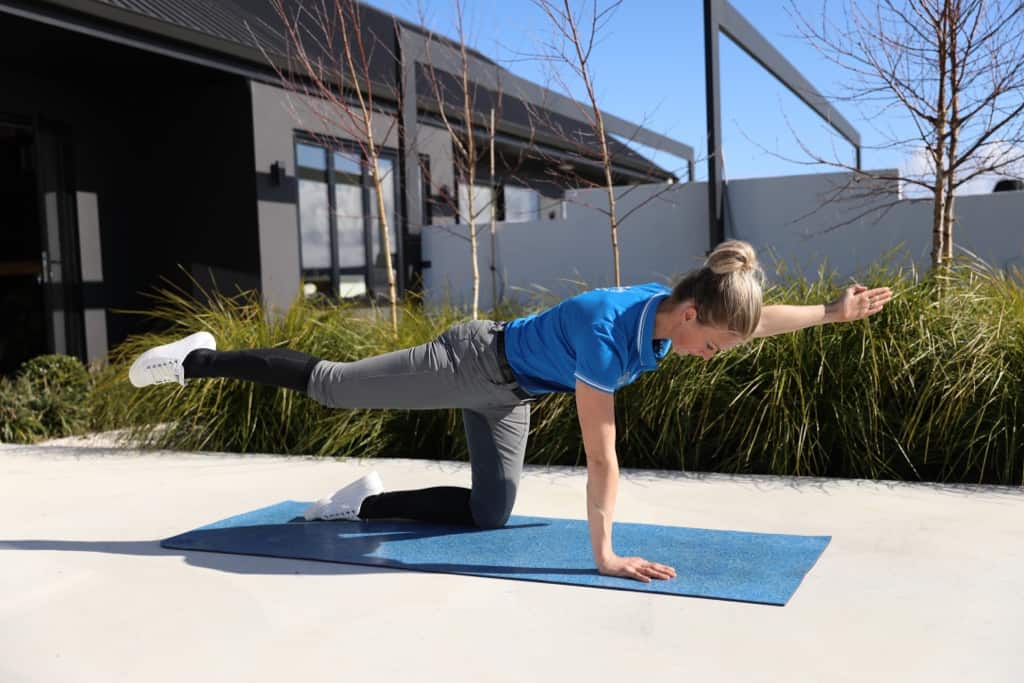
Forearm Plank
These are a great way to learn to properly engage your core especially if you focus on shorter, more intense holds.
Start with your forearms and knees on the ground, shoulder-width apart. Elbows should be stacked underneath the shoulders, your forearms straight in front of you on the ground.
Lift your knees off the ground and push your feet back to bring your body to full extension, so your body creates one long line.
Keep your core tight and your hips lifted, and keep your neck in line with your spine.
Hold for 10 seconds, take a brief break then repeat 8-10 more times.
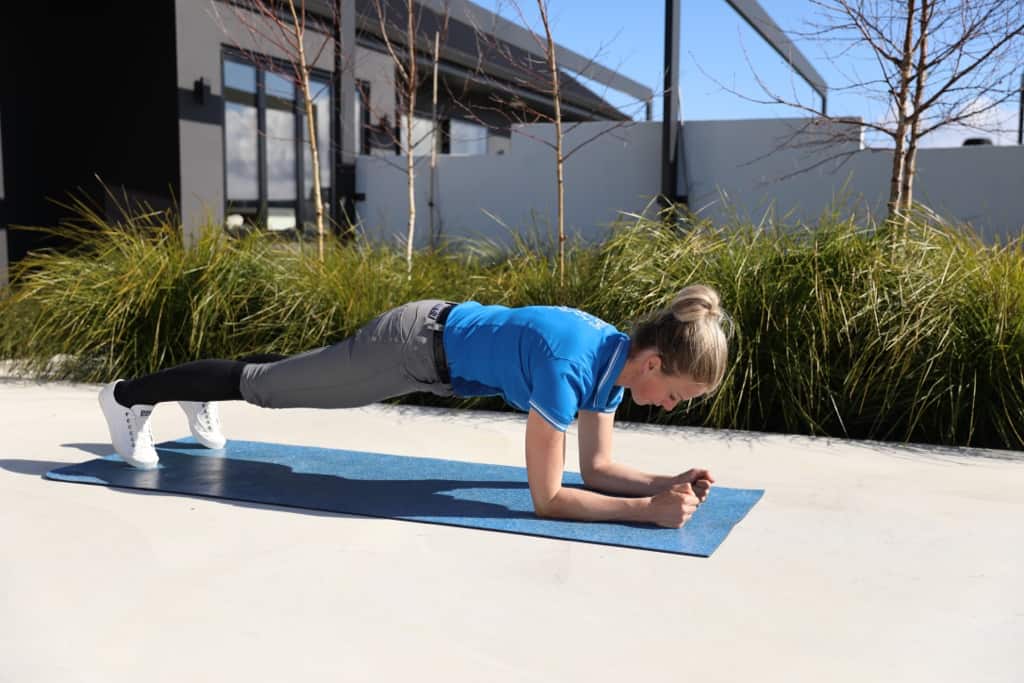
Forward Ball Roll
The forward ball roll is an exercise to help strengthen your core musculature, especially your transverse abdominis.
Not only will this exercise help you achieve strength in the corset of your abdominals : your TVA.
It will also provide stability and flexibility in your obliques and back muscles, but it will also target your shoulders and triceps muscles.
Place your forearm on the ball and gradually roll the ball forward.
Only go as far as you can maintain a neutral spine and not arch your back.
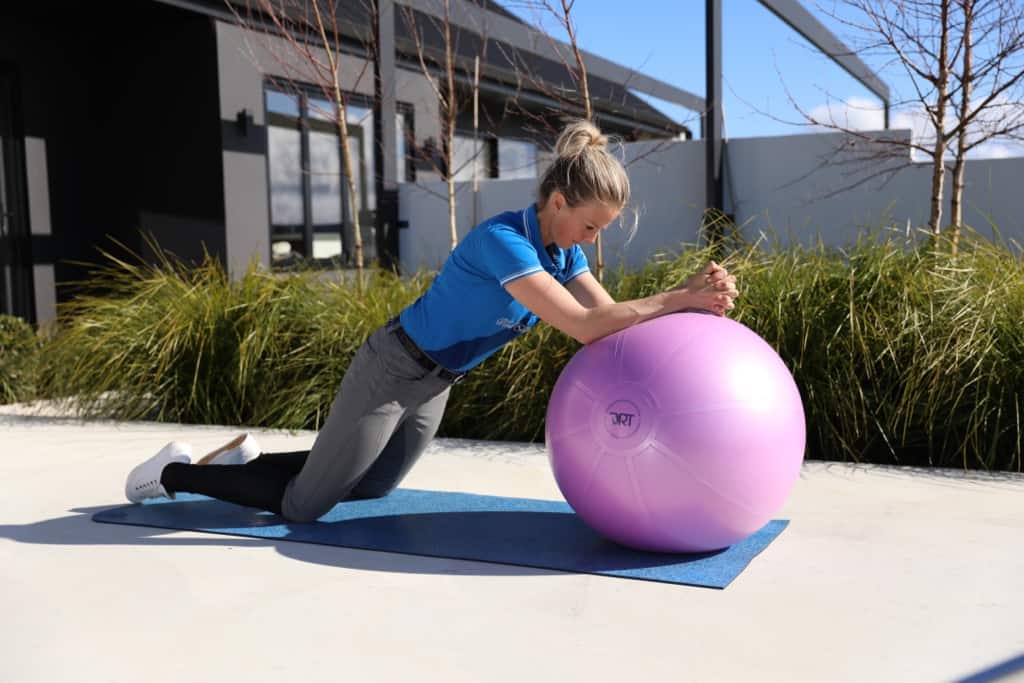
Each of the exercises is an advancement from easiest to hardest.
So begin where you are and learn to understand your transverse abdominis and how to activate it correctly.
You could do these exercises as a circuit and create a great workout to do a couple of times per week.
The corset of your abdominals : your TVA is also something you can learn to activate when sitting, driving, or even standing throughout your day.
The more you teach your body how to activate this regularly, the more second nature it will become and the more you will see this translate back to your riding.
Dressage Rider Training System
Dressage is all about you, the rider and the horse. It is a team sport, so we developed a training system for you as a rider. It is designed to help you work on symmetry, balance, coordination and suppleness while OFF the horse.
With the aim that when you are riding, you can sit in good posture and control and be able to focus on your horse during that time when you are in the saddle and not hold your horse back from achieving its potential.
To get started on your journey, take a look at our FREE Rider Fitness guide here and discover our system of training.
Learn the four elements that go into you as a dressage rider and how you can begin to develop them today.
Dressage Rider Training is for you as a rider and to help you develop into the best rider you can be.
Want more FREE articles to help you with your dressage rider training? Try these out?
What is dressage and how do I get started
Dressage Rider Exercises For Improved Fitness
Dressage Rider Leg Strength & 6 Exercises To Help You Improve
Dressage Rider Exercises For Improved Fitness
Upper Body Exercises For Dressage Riders
More articles
Dressage Rider Training Program
Join other participants on our 12-week 'step-by-step' online rider
training program. Improve the 5 components of your riding.
Only available 3x per year.
see full details & register your interest

